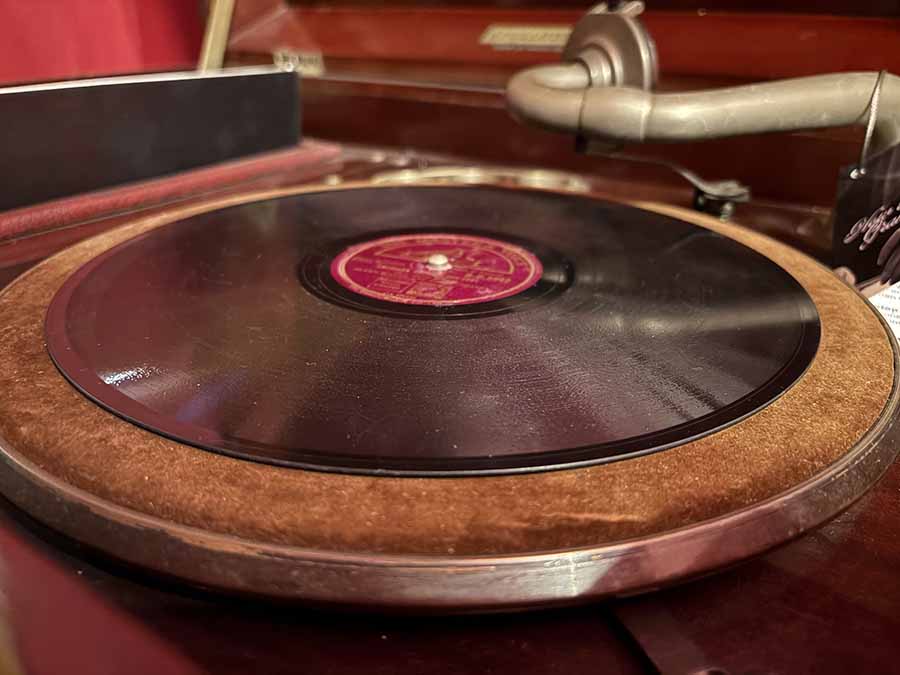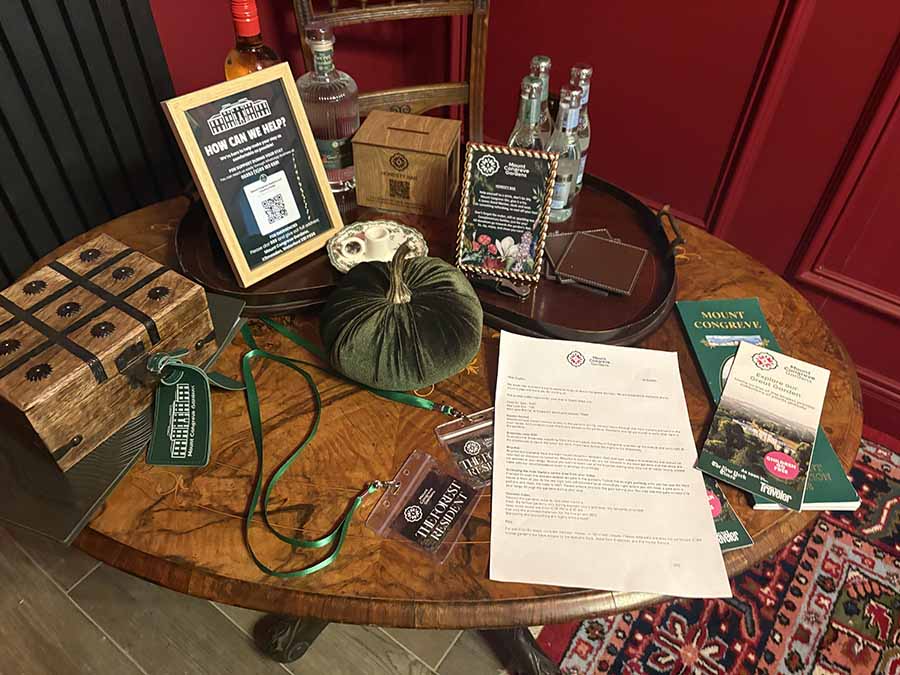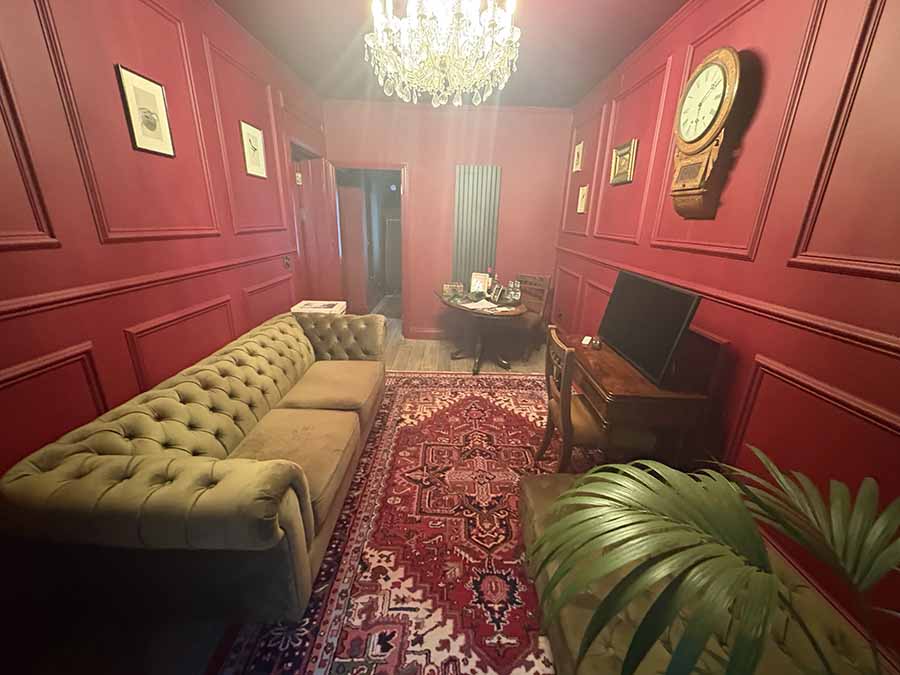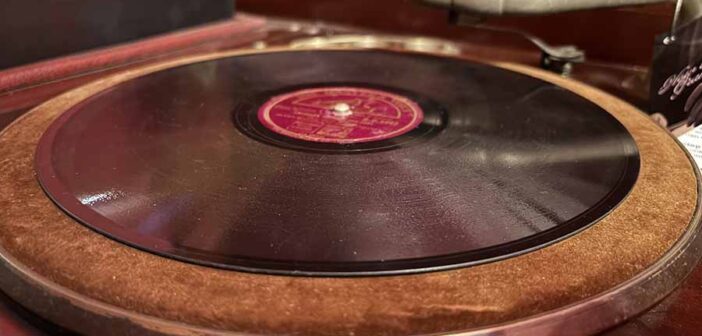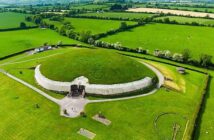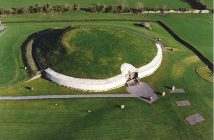Mount Congreve is one of the island’s great gardens, a world-class horticultural haven. It is also one of the island’s most pleasant places to stay. A flower of friendliness, so to speak, surrounded by succeeding seasons of spring bulb flowers, rhododendrons and azaleas, and the walled gardens with their herbaceous and shrub borders.
It was a yellow leafed October evening when I arrived, and drove first to Mount Congreve main house, having not opened the email with instructions and gate codes, due, I explained to my being out-of-contact, in my habitual state of off-line transit. The entrance to mount Congreve is well signposted. There is a public car park, and an accessible car park nearer the big house, but the feeling you get is that you should be arriving by horse and carriage.
Going to the big house was fortuitous, because I got to meet the house-elf of the gate lodge (lodge elf?), Mary, who brought me to the door of my lodge and guided me in.
The gate lodge is a haven in its own right, a haven from the horticultural haven of Mount Congreve, one of the great secrets of Irish hospitality, as it once was one of the great secrets of, well, everything else. Go to an island guide published boefre before 1980, it is never even mentioned.
My lodge has its own separate entrance, a kilometer further down the road to Kilmeaden,, a coded gate (prepare for lots of codes, and old padlocks that take forever to line up). It is positioned to the right of the gate as you enter, a gravel approach, with a well cut lawn and manicured hedge, and (gate lodge, it is in the name) with the busy road nearby, a little bit noisy from oncoming traffic which spoils the horse-and-carriage illusion. I awoke to an eclectic and angry note from the gardener claiming my car had somehow blocked the gate into the field beyond. Not an ideal gesture in a luxury retreat.
The original gate lodge has been divided in two, with adjoining doors for a family, Oak and Acorn (guess which is the little one, yes, that is where I stayed). Mrs Doyle, who lived in the gate lodge, is still alive and returned to inspect the considerable renovations since her time, it is reported, approvingly.
Gated and waited
Ambience is splendid. You can hear birdsong from inside the cottage, and the wonderful gardens, the USP of Mount Congreve, can be entered by a small wicket gate. Guests are given a pass to wander after hours.
Inside my abode a lot of effort has been to made to recreate a lost age, a retro radio to the right of the door, a couch, and, to the left a fantastic old Fulloton record player with some 78rpm records (famous choir of canaries, broadcast, electronically recorded).
There is a wonderful coat stand and a large plant to the right as you enter, and repro antique clock. with the numerals in Roman writing. There are etchings of birds on the wall to go with the inescapable morning soundtrack.
On the opposite side of the room, the invasion of a more modern age, a table with a Flat screen television.
On my small table there was an honesty bar and a bottle of non-chill filtered whiskey, named after “the mad Marquess,” Henry De La Poer Beresford, a local legend from 15k away in Curraghmore, famous horseman, bon vivant, high class vandal and originator of the phrase “paint the town red.” It sits alongside another bottle of Woodland, gin and an honesty box for leaving the bar bounty. The mad Marquess would have necked both bottles and fled without paying.
The heating system, which comes with a complicated remote control. The bedroom comes with a mirror, some dried plants, a bed with a headboard and a footboard. There are six pillows on the antique bed. The carpet is like out of your granny’s. A kind granny that was not murder by the wolf. The lodge is small, so every bit of space is used, like a cruise ship stateroom.
The bathroom is stocked with Secret Garden toiletry products (again from Waterford), a shower with two controls, with a small sink beside a toilet, seven toilet rolls in a pile, three towels.
To the left there is a small kitchen, some finished mugs, a coffee machine, which I never quite worked out how to use, a SMEG gas cooker, a toaster, a microwave, a fridge in the wall stocked with milk and butter, with some muesli in jars in the nearby cupboard.
And the wonderful house elf, Mary and a conscript from the cafe, dropped around a breakfast box with an apple and pears, some scones,, jam and butter, and some grapes.
Which leads to a small problem? Where are you going to eat your breakfast? Is there enough room beside the whiskey gin and some tonic left on the sole table, along with promotional material and the honesty box and another little chest, which looks like it came from Treasure Island.
The alternative and the only solution was to eat it standing up. It tasted better that way.
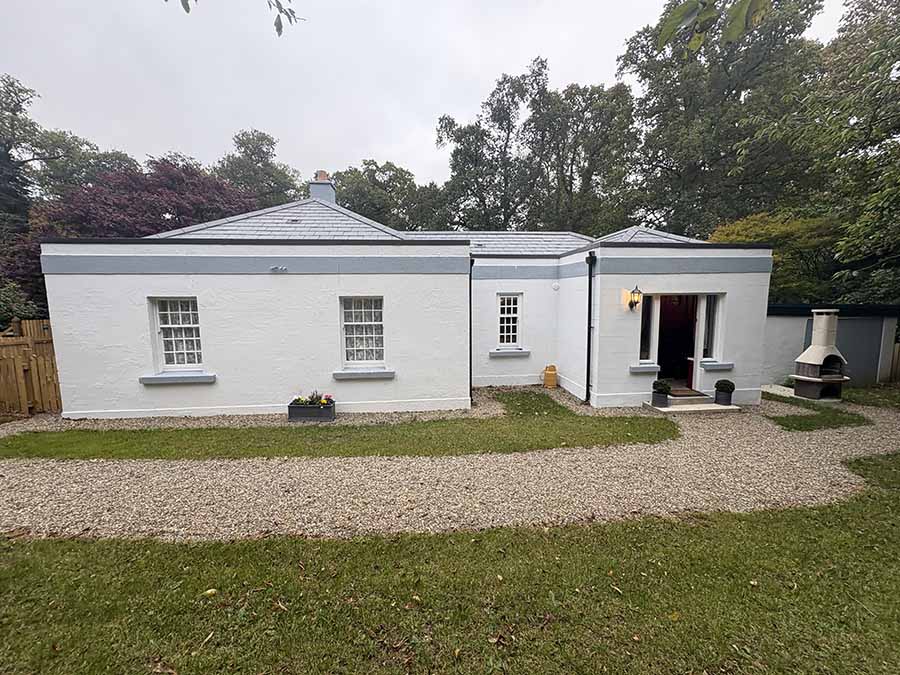
The main house
Mount Congreve is not just gate lodges, although there are six of them. The famous large house, reportedly the last in the country to employ liveried servants, was bequeathed to the state by its last private owners and now enjoys life as a visitor attraction, cafe, Foxford shop, and Secret Garden vegetable retail outlet. While I was there the Foxford shop was temporarily moved to make way for a splendid gala dinner, the guests looking like they had accidentally stumbled onto the set of a Netflix series,
Standout features include the lounge’s garden views and the breakfast pack’s local produce. Dining shines through the Stables Café’s plot-to-plate quiches and the Tack Room’s tea service. Guests get after-hours garden keys and Greenway bikes (when available).
The space includes a small lounge with armchairs by a window overlooking the estate’s entrance, the welcome packs stocked with local honey, fresh bread and eggs for breakfast, plus maps and tips for exploring the grounds after closing time.
Dining options keep things tied to local and the land. The Stables Café serves up breakfasts of poached eggs on toast alongside estate-grown honey, lunches of quiches made from seasonal vegetables, and afternoon teas featuring scones with jam in the adjacent Tack Room.
The café offer pots of tea or coffee, and simple spots to linger with a glass of wine while watching the light shift over the lawn.
Round this horticultural haven there are 70 acres of woods and flower borders, to board games and books stacked on lodge shelves for rainy afternoons. After hours, the gardens open up for a wander past camellias and magnolias, or paired sunset picnics with baskets provided by reception.
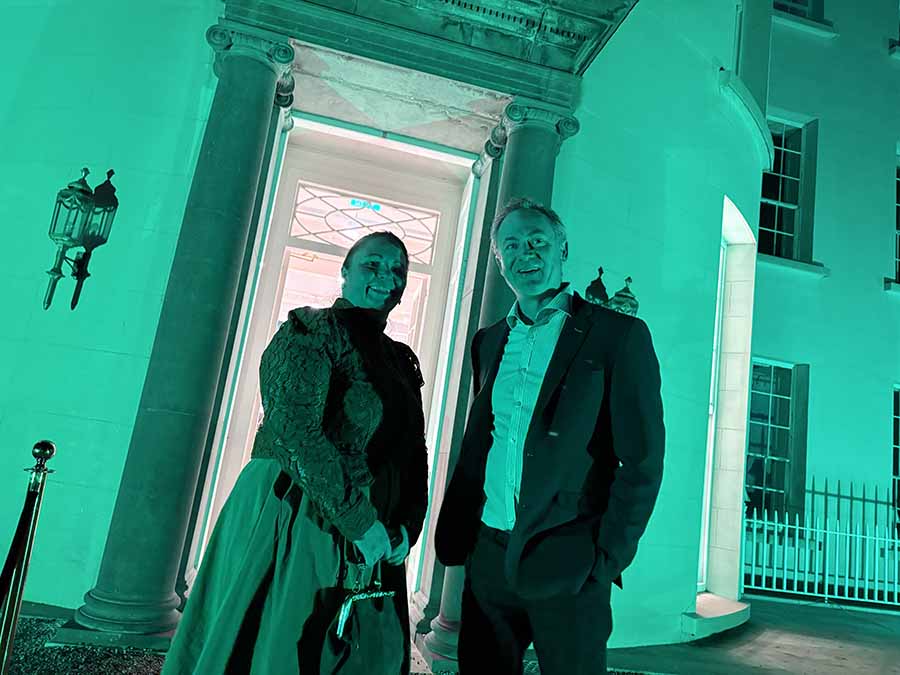
Hidden history
Unremarked upon for two hundred years of its history, Mount Congreve was transferred from its family trust to Waterford City and County Council in 2017. Once heart of an estate of once an estate of 7,309 acres, the house dates to the 1760s, a three storey, seven bay centre block with two storey, three bay overlapping wings; joined to pavilions by screen walls with arches on the entrance front and low ranges on the garden front, where the centre block has a three bay breakfront and an Ionic doorcase. Granite was transported from Carlow, no easy task at the time.
The house was remodelled and embellished by Ambrose Congreve between 1965 and 1969, when a deep bow was added in the centre of the entrance front, incorporating a rather Baroque Ionic doorcase; and the pavilions were adorned with cupolas and doorcases with broken pediments. Other new features include handsome gateways flanking the garden front at either end, a fountain with a statue in one of the courtyards between the house and pavilions and the magnificent gardens laid out along the bank of the River Suir which now extends to upwards of 100 acres; with large-scale plantings of rare trees and shrubs, notably rhododendrons and magnolias.
Ambrose died in London at 104 years old, somewhat appropriately, on his way to the 2011 Chelsea Flower Show. The last of six generations of Congreve to live on the estate since the house was built in 1760, he brought new meaning to the family motto ”he does not die whose good name lives on” with his benevolence in leaving the house to the state. It does, of course, come with a large maintenance and redevelopment bill which is a small price to pay.
The original walled garden contains an early 1700s greenhouse, in need of a makeover, but the gardens as we know them today were created in the 1950s and subsequent decades, inspired by Lionel de Rothschild’s garden at Exbury in Hampshire. The gardens were opened to the public by the eccentric last owner (ask the locals for details). Brendan Lehane’s 1981 Companion Guide to Ireland in 1981 was the first tourist book to mention it as a tourist visit, a don’t;-miss five miles from waterford accorded an entire paragraph to itself.
The ‘Mount’ itself is too insignificant to feature on the map, although it gets a mention in the novel Hanrahan’s Daughter, by Kilkenny born novelist and sportswriter Pádraig Puirséal.
Why overnight? Mainly for the prospect, pretty unique in any botanical wonderland, of spending an evening or early morning rambling the gardens. The Déise devil is in the details: dog beds and toys for pets, robes and slippers in cabins nearby, or the option to book guided plant talks on Thursdays, ensuring time passes in a calm rhythm suited to couples or small groups seeking a break from the everyday. There is free Wi-Fi throughout, a base that feels private and connected, free entry to the full estate, and access to the Greenway.
From there, visitors can settle into accommodation that mixes old stone walls with modern touches, cosy bedrooms fitted with antique beds, underfloor heating and Smart TVs, alongside galley kitchens boasting marble counters and compact dining spots for two or four. Outside, private gardens come equipped with barbecues and hammocks for relaxed evenings under the trees.
I never did quite work out the coffee machine.
